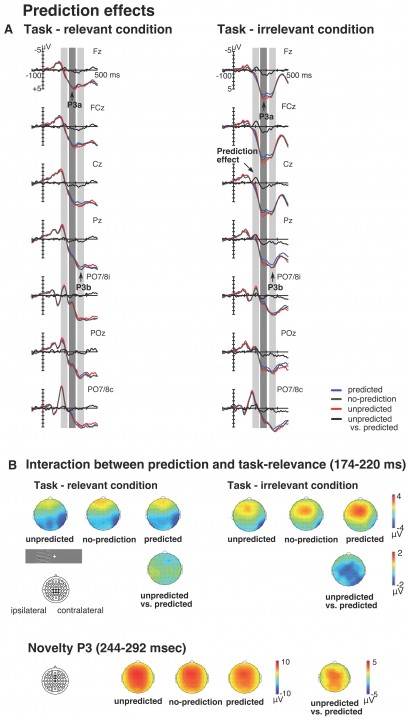The paper entitled Interrelation of attention and prediction in visual processing: Effects of task-relevance and stimulus probability, co-authored by A. Marzecová, A. Widmann, Iria SanMiguel and Erich Schröger, has been published online in Biological Psychology.
The full abstract reads as follows:
The potentially interactive influence of attention and prediction was investigated by measuring event-related potentials (ERPs) in a spatial cueing task with attention (task-relevant) and prediction (probabilistic) cues. We identified distinct processing stages of this interactive influence. Firstly, in line with the attentional gain hypothesis, a larger amplitude response of the contralateral N1, and Nd1 for attended gratings was observed. Secondly, conforming to the attenuation-by-prediction hypothesis, a smaller negativity in the time window directly following the peak of the N1 component for predicted compared to unpredicted gratings was observed. In line with the hypothesis that attention and prediction interface, unpredicted/unattended stimuli elicited a larger negativity at central-parietal sites, presumably reflecting an increased prediction error signal. Thirdly, larger P3 responses to unpredicted stimuli pointed to the updating of an internal model. Attention and prediction can be considered as differentiated mechanisms that may interact at different processing stages to optimise perception.

Full reference:
Marzecová, A., Widmann, A., SanMiguel, I., Schröger, E. (2017). Interrelation of attention and prediction in visual processing: Effects of task-relevance and stimulus probability. Biological Psychology, in press. DOI: 10.1016/j.biopsycho.2017.02.009.

